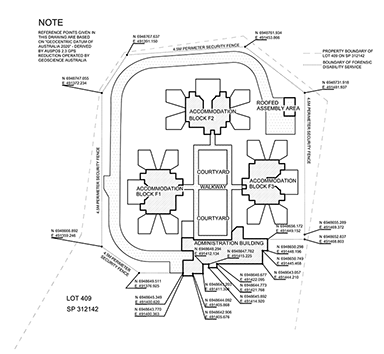This regulation may be cited as the Forensic Disability Regulation 2011.
This regulation commences on 1 July 2011.
3Register of use of regulated behaviour controls—Act, s 74
(1)For the Act, section 74, the register of the use of regulated behaviour controls must, for every use of a regulated behaviour control on a forensic disability client, include the following information—(a)the client’s name and date of birth, if known;(b)a description of the client’s behaviour which resulted in the use of the regulated behaviour control, including the intensity of the behaviour;(c)the type of regulated behaviour control used;(d)the reason for the use of the regulated behaviour control;(e)the details and outcome of the following incidents—(i)any medical treatment given to the client or others;(ii)any attendance by an entity external to the department;Examples of an entity external to the department—
•a police officer•an ambulance officer•a registered health practitioner who is not employed by the department(iii)any notifiable incident;(f)the name and position of the person who prescribed or authorised the use of the regulated behaviour control;(g)the day and time when the use of the regulated behaviour control was prescribed or authorised;(h)if the regulated behaviour control is not fixed dose medication—the name and position of the person who administered or used the regulated behaviour control;(i)the day and time when the use began and ended;(j)the effectiveness of the use in controlling the client’s behaviour;(k)if the type of regulated behaviour control used is a mechanical restraint— the type of mechanical restraint;harness, gloves, sheet, splint, cuffs, bolster(l)if the type of regulated behaviour control used is behaviour control medication—(i)the name of the medication; and(ii)whether the medication is fixed dose medication; and(iii)the dose, route and frequency of the medication; and(iv)any restrictions on the use of the medication.(2)Also, if the type of regulated behaviour control used is behaviour control medication that is fixed dose medication, the register must be updated at the end of the first month from the beginning of the use of the regulated behaviour control and subsequently, at intervals of not more than 1 month until the use of the regulated behaviour control ends with the following information—(a)a confirmation that the medication was administered as specified in the psychiatrist’s prescription;(b)the name and position of any person who administered the medication.(3)For subsections (1) and (2), a use of a regulated behaviour control that is fixed dose medication begins on the first administration of the medication under the psychiatrist’s prescription and ends on the last administration of the medication under the psychiatrist’s prescription.(4)For subsection (1)(e), incidents means incidents that occurred as a result of—(a)the client’s behaviour mentioned in subsection (1)(b); or(b)the client’s reaction to the use of the regulated behaviour control.(5)In this section—notifiable incident means a notifiable incident under the Work Health and Safety Act 2011, section 35.s 3 amd 2011 SL No. 240 s 800
4Forensic disability service—Act, s 95
For the Act, section 95, the place shown in schedule 1, located on lot 409 on SP312142, is declared to be the forensic disability service.s 4 amd 2020 SL No. 94 s 8
5Records about forensic disability clients
(1)The administrator must, for each forensic disability client, keep a record containing the following information—(a)the client’s name and date of birth, if known;(b)the day the client became a forensic disability client;(c)the day the client was detained in the forensic disability service;(d)a photograph of the client taken within the last year;(e)a list of any adverse reactions the client has to medication;(f)if the director approves the client’s absence from the forensic disability service—the approved period of absence and the conditions, if any, under which the absence is approved;(g)if a senior practitioner, for a client’s individual development plan, authorises limited community treatment for the client—(i)the day of the authorisation; and(ii)the conditions, if any, of the authorisation; and(iii)if the conditions are changed—the day of the change; and(iv)the day the authorisation ceases to have effect;(h)if a senior practitioner gives the client a notice requiring the client to return to the forensic disability service—the day the senior practitioner issues the notice;(i)the day the client ceases to be a forensic disability client and the reason for the cessation.(2)Also, the record must contain details of any decision or order made by the tribunal or Mental Health Court about the client, including, for example, the following details—(a)the decision or order made;(b)the entity that made the decision or order;(c)the day the decision or order was made;(d)the conditions, if any, of the decision or order;(e)if the conditions of the decision or order are changed—the day of the change;(f)the day the decision or order ceases to have effect.(3)If the information contained in a record under this section ceases to be correct, the administrator must update the record as soon as practicable after the administrator becomes aware that it is incorrect.(4)A client’s file kept at the forensic disability service for a client is not a record for this section.s 5 amd 2017 SL No. 16 s 5 sch 2
sch om 2020 SL No. 94 s 9
sch 1 ins 2020 SL No. 94 s 9





